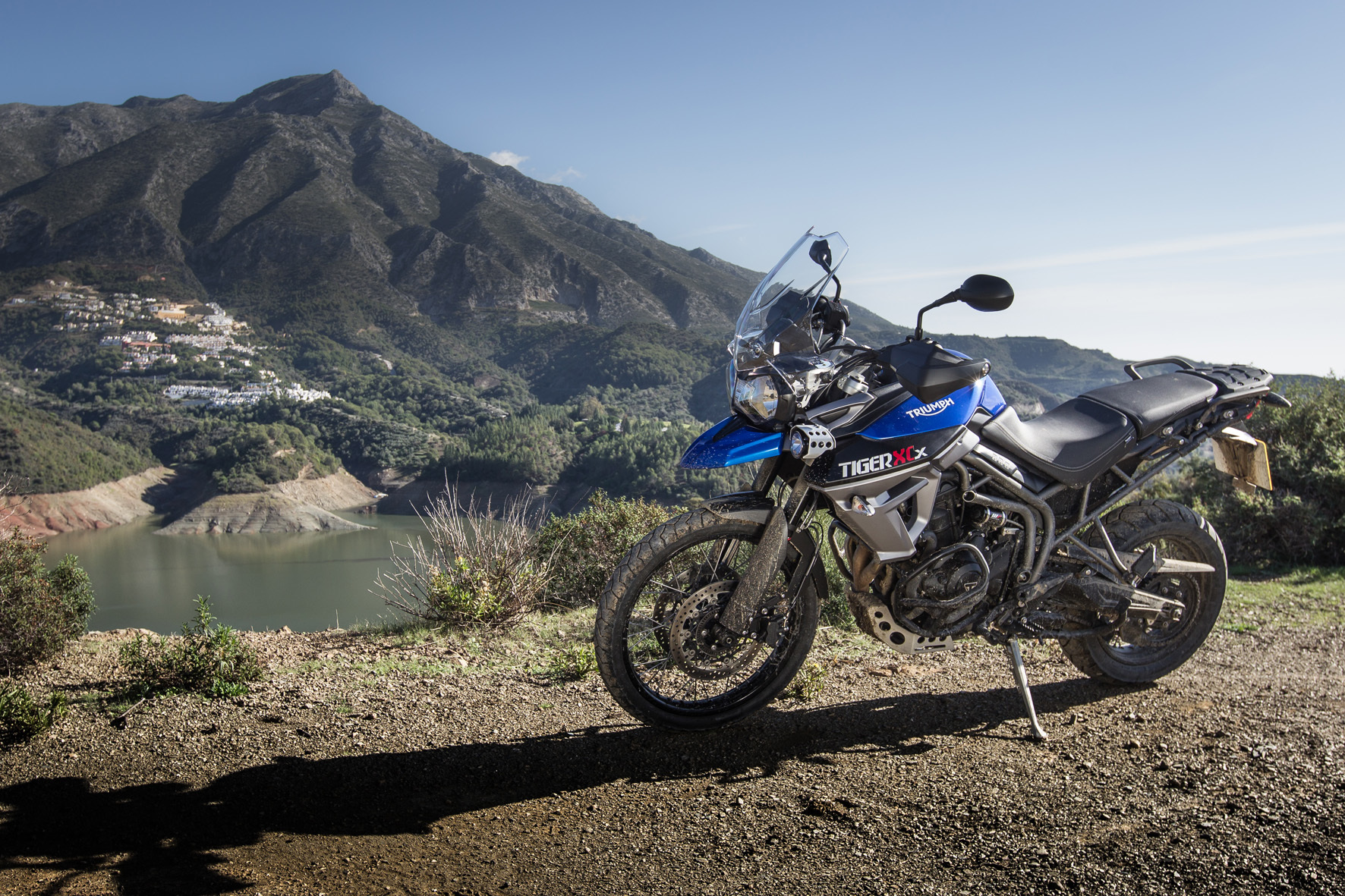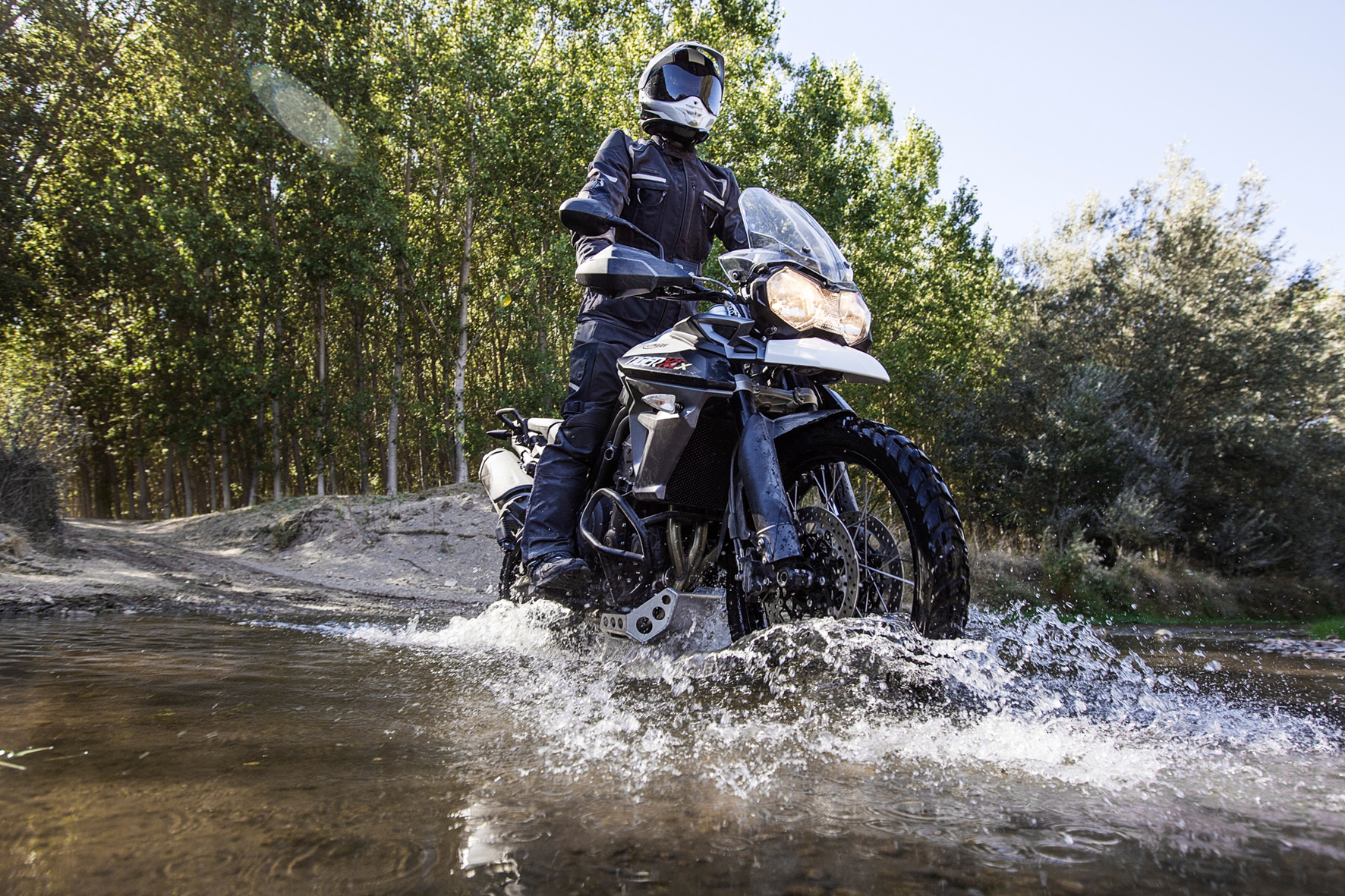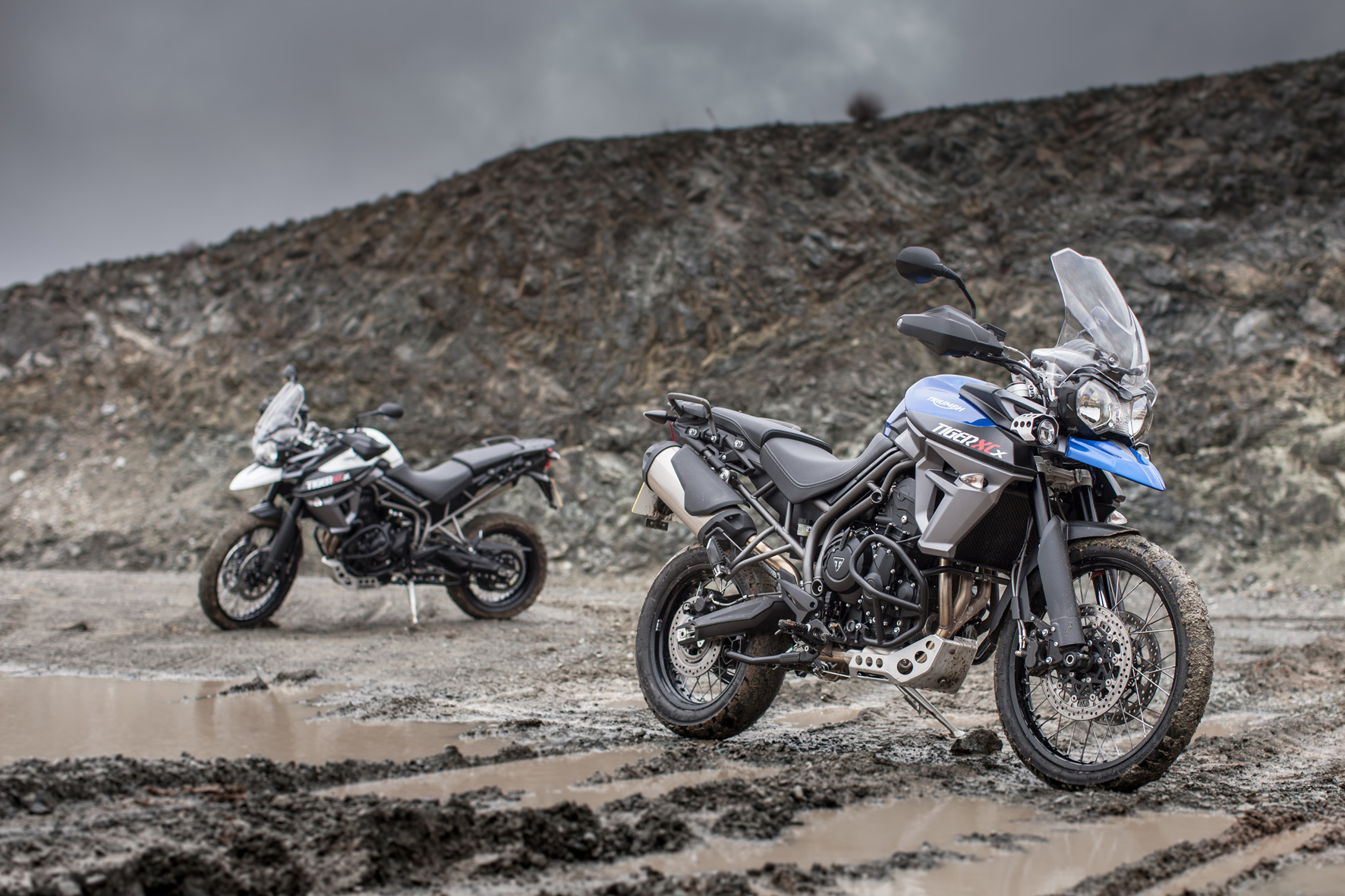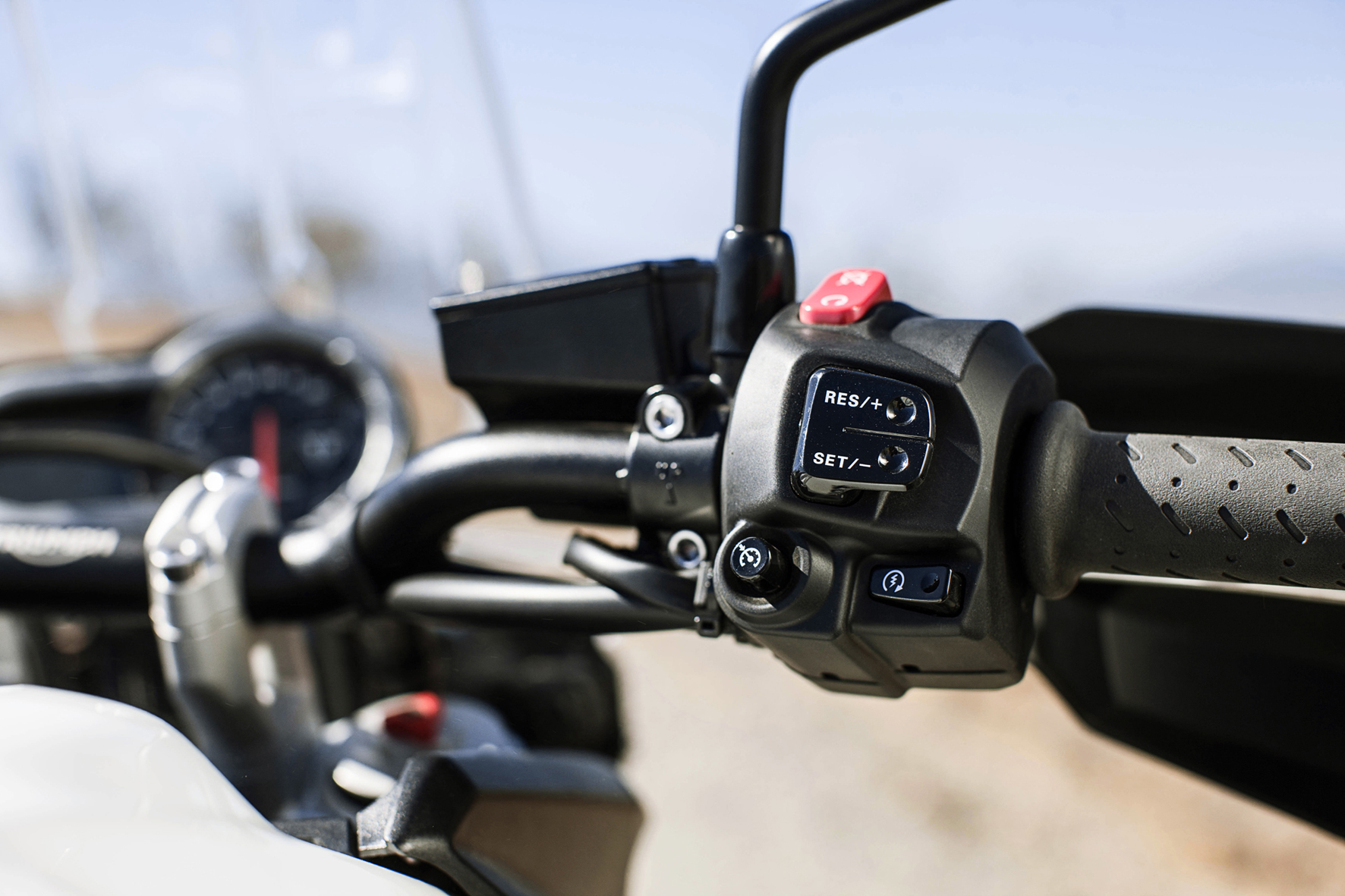Despite its off-roading credentials Triumph’s Tiger XCx makes a lot of
on-road sense.
Most people don’t buy adventure bikes with an intention of going on an adventure. Not the kind that involves drifting in ankle-deep sand and scaling rocky hillsides, anyway. It’s less globe-trotting and more town-and-countryside-trotting.
Manufactures aren’t daft. The concept of adventure bikes sells well. They’re tall, comfortable and often very practical. But some are about as comfortable roughing it as the Queen.
Triumph is sticking to its principles, though, creating a more obvious distinction between the road (XR) and off-road (XC) models.
Customers can also ‘upgrade’ either Tiger to a fully-pimped ‘x’ version with switchable ABS and three riding modes; Road, Off-road and a programmable Rider mode so that you can customise the traction control, ABS settings and throttle response to suit your skills or the conditions.
Cruise control, an extra 12-volt socket and handguards are amongst other the practical additions which help the Tiger 800 XCx to not only look the part (which will suit the majority of customers) but play the part too.
The visual differences between the XR and XC are obvious. The off-road version has spoked wheels with a 21-incher at the front, Bridgestone Battlewing rubber, longer-travel WP suspension and a sump guard. The saddle is also 30mm higher and it is easily adjustable from 840mm to 860mm.
There’s every likelihood that the XCx’s off-road abilities will exceed your own, but the mere fact that it’s so capable makes it all the more enjoyable.
The high riding position and wide handlebars feel instantly comfortable and the XC looks so complete and sturdy that the road-focused XRx model suddenly seems rather ordinary. Which is precisely why the XC could be a best seller.
I have no intention of registering for the Dakar any time soon, and my enthusiasm for off-roading is far higher than my actual ability, but the XCx not only fits my 6ft frame like a glove, it looks and rides like the real deal.
The 800cc triple cylinder engine is identical to the XR’s; both Tigers roar with a delightful raspy tone, pulling strongly from 3,000rpm to beyond 9,000.
The fuel economy has been reportedly improved by 17%, from 55mpg to 65mpg, to offer a theoretical range of 270 miles in ideal conditions (which should be a stranger to this bike).
It is also flexible enough to flatter the most inexperienced off-roader, and at a fairly light 218kg by adventure bike standards the XCx handles with almost as much finesse as the XRx.
The larger front wheel does mean that the front end feels heavier and it requires a little more effort to flick it from side to side, but it’s still rewardingly steady in corners, especially when rolling through them on a steady throttle.
Long suspension travel is ideal for soaking up those really rough adventurous miles, but if most of yours will be on hard asphalt, then nailing the throttle and jumping on the brakes will inevitably cause front end pitching.
Although the suspension is soft, the 43mm USD fork is adjustable for rebound and compression damping and the WP mono shock unit has preload and rebound adjustments. It is an ideal compromise for riders who want to have it all.
Having ridden both models I’d be sorely tempted to opt for the XCx. In many ways it’s the more practical choice.
OK, so it doesn’t have the XRx’s higher windscreen, but the non-adjustable standard one is quite impressive and it does have a higher riding position, which is ideal for picking a route through congested traffic. That softer suspension could also come in handy for the pot-holed, frost-damaged and often very wet British roads.
Triumph’s accessories list is phone-book thick. Why kit an adventure bike out with bells and whistles if you’ll only pop to the shop with it? Ask any BMW GS rider. Offering options and nurturing dreams certainly hasn’t
hurt BMW’s sales figures.
At £9,999, the XCx is only £500 more expensive than the XRx and it costs just £239 more than BMW’s standard F 800 GS Adventure.
Riders with no intention of riding off-road will find the XRx sportier, lighter and more playful. But if you’re in any doubt, or if you’re just tall like me, the XCx plays a blinder.
Facts & figures
Model: Triumph Tiger XCx
Price: From £9,999
Engine: 800cc three-cylinder producing 95bhp @ 9,250rpm and 58.2lb/ft @ 7,850rpm
Weight (kerb): 218kg
Seat height: 840-860mm (adjustable)
Fuel capacity: 19 litres



